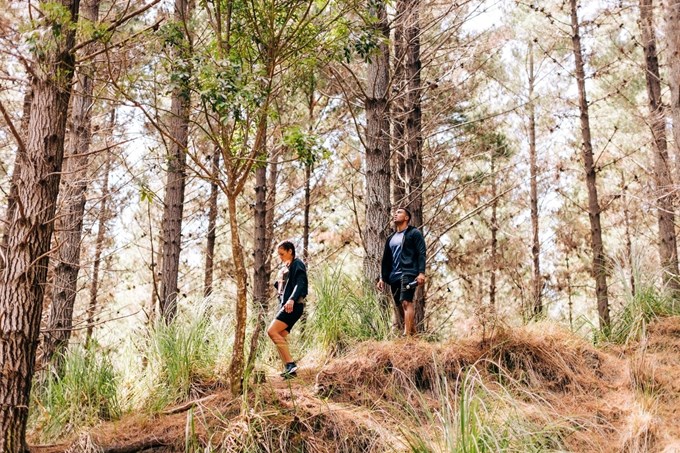There has been some public interest in a developer’s decision to fell trees in Auckland’s suburb of Pukekohe. We wanted to take this opportunity to explain how these decisions are made and what Auckland Council is doing to protect and increase our tree canopy across Tāmaki Makaurau.
Why was the developer allowed to fell these trees?
The developer applied for Certificates of Compliance to remove the trees located on private property. We issued the Certificates of Compliance because the activity was permitted under the Auckland Unitary Plan.
As a regulatory body, our role is to check whether activity is permitted or not within the rules of the Resource Management Act and Auckland Unitary Plan, and we must operate within the law.
Because the trees were not identified as being in a Significant Ecological Area at that time and were located within the Rural Urban Boundary, their removal was a permitted activity under the Auckland Unitary Plan and did not trigger the need for a resource consent.
As no resource consent was needed, there was no discretion afforded to us to consider and assess the effects of the tree felling.
“The processing planner actively worked, over months, to check every aspect of the proposal and see if a resource consent was legally required, but it was not. We must be certain that no consent is required, otherwise we cannot issue a Certificate of Compliance,” says Craig Hobbs, Auckland Council Director Regulatory Services.
What is a Significant Ecological Area?
The Significant Ecological Area overlay was introduced to the Auckland Unitary Plan in 2013 and was confirmed in 2016 following a public submissions and hearings process. This was to protect and better provide for the management of areas that contribute significantly to Auckland’s biodiversity.
To date we have 3,234 land-based Significant Ecological Areas protected in the Auckland Unitary Plan covering 79,124 hectares of vegetation and wetlands on public and private lands.
A Significant Ecological Area overlay for this vegetation was proposed as part of Private Plan Change 76 which had legal effect from 23 March 2023, after the Certificates of Compliance were issued.
Every time land is rezoned vegetation and wetlands are assessed as to whether they should be protected as Significant Ecological Areas, Wetland Management Areas and Notable Trees through protections within precinct plans, or other mechanisms such as covenants.
Did council consider the impact on fauna (i.e. bats)?
Our ability to consider indigenous fauna, such as bats, is limited to when a resource consent is required. It is directly linked to whether the vegetation being removed is protected as a Significant Ecological Area, or if it is located on rural land outside the Rural Urban Boundary.
In this instance, the vegetation was not protected, and no consents were required under the Auckland Unitary Plan. This meant that we could not consider any effects on fauna resulting from the removal of the trees.
“Our planners and compliance officers work to protect the environment every single day when they are processing resource consents and ensuring conditions are adhered to. They consider the effects of a proposal on the environment and on persons under the Resource Management Act, but they can only do this where a resource consent is triggered,” says Craig Hobbs.
What is Auckland Council doing to plant more trees in Tāmaki Makaurau?
As part of the council’s Urban Ngahere Strategy, our aim is to increase canopy cover by 30 per cent across Auckland’s urban area, and at least 15 per cent in each local loard area. We are on track to reach the target set for local boards having 15 per cent tree canopy cover in most of the urban local board areas except in some of the South Auckland areas.
“There were over 1.6 million plants, including trees, planted during the 2022/2023 financial year. This is a significant increase on previous years being over double the annual totals for 2020 and 2021. Many of the planting programmes involve community groups, schools and mana whenua,” says Craig.
The Natural Environment Targeted Rate has invested in planting 89,301 plants through the Trees for Survival programme.
In addition, the 200-hectare Carbon Sequestration tree planting programme (which started in 2021 with 13,000 plants) and has increased to 87,000 plants planted in 2022.
The Mayor’s Million Trees campaign planted 344,291 trees and the Healthy Waters work programmes have planted an additional 624,000 plants which is three times the number of plants in 2021.


